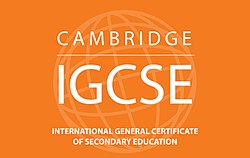
The middle school grades have a major impact on students' futures, especially if they are their first step towards higher education. These grades can also tell students how far they are progressing and where they need to improve. Graduations are also a way to monitor a student’s progress and help them get a scholarship. These grades can be a motivator to motivate students to do better and work harder.
Influence on high school graduation rates
There is no standard, accepted guideline regarding the influence of middle school grades on high-school performance. There are many factors that influence the success or failure rate of middle school graduates. Students' grades can be affected by race and gender. Students who are black have a lower academic success rate than those of white.
However, a recent study has shown that high school grading standards are an important indicator of success. It was found that students' grades can be affected depending on their attendance and effort. Although grades are often used as an indicator of student abilities, they are not always accurate and reliable indicators of student achievement.

Although previous research has indicated that school grades can predict high school success in high school, the current results are inconsistent with those of prior studies. Additionally, differences in results between studies may be due to differences in sample sizes. These studies do not allow for general conclusions.
Participation in class is crucial
Participation is key to student learning. Participation can help students learn and develop their communication skills. Teachers can gauge student progress by having students participate in classes. Teachers can have a seating chart on their desks that allows them to place check marks next students who make contributions.
Participating in class helps students improve their communication and critical thinking skills. Active participation in class discussions shows teachers that students are ready for discussions and are interested in the topic. These students tend to do better on communication skills tests.
Mixed-methods research allowed researchers to compare various types of data, allowing them to gain a wider perspective. It included survey data from 762 students aged nine to fifteen and data from 182 teachers. It also included ethnographic data from six classes.

Advanced courses are important in middle school
Automatic enrollment can seem like a great idea. However, any policy that succeeds must have multiple supports and tools available for both students and teachers. While increasing access to advanced courses is a key step towards closing the achievement gap it cannot be done in isolation. Districts need to adopt a continuous improvement, data-driven approach in order to increase student participation and performance.
Here are some things to consider when deciding whether advanced courses are right-fit for you. First, you should determine if a student has the academic background and potential for the advanced course. A second factor to consider is whether the student will have the ability to finish the course in a reasonable amount of time.
Third, check the curriculum requirements. A student can take a world languages depending on their course. A typical laboratory experience must be completed by a student for at least 1,200 minutes. In addition, middle school science courses must include lab experiences. These lab experiences must take place during the school calendar if a student takes an 8-grade accelerated course.
FAQ
What's the point of education or schooling?
Education should be able to help students acquire the skills needed for employment. Education is not only academic. It is also a social pursuit where students learn from each others and gain confidence through engaging in activities such music, sports, and art. Learning to think creatively and critically is a key part of education. This allows students to be self-reliant, independent, and confident. What does it take to achieve high educational standards
Education standards that ensure all students reach their full potential are good. They give teachers a clear vision of the goals they want to achieve with their pupils. Good educational standards are flexible enough to enable schools to meet changing needs. In addition, they must be fair and equitable: every child has the same chance of success regardless of his/her background.
What are some possible ways to receive scholarships?
Scholarships can be granted to help cover college expenses. There are many types and types of scholarships. These are:
-
Federal Grants
-
State Grants
-
Student Loans
-
Programs for Work Study
-
Financial Aid
Federal grants come directly to the U.S. Federal grants are subject to certain conditions. To demonstrate financial need, applicants must meet certain requirements.
Individual states offer state grants. Some states offer these funds based on financial need; others award money for specific reasons.
Banks and lending institutions offer student loans. Students often borrow money to pay for tuition and living expenses.
Employers can use work-study programmes to attract qualified students. Employers are required to pay employees at least minimum wage.
Financial aid can help families with low incomes afford college by covering all or part of tuition costs.
How long should I spend studying each semester
The amount of time that you spend studying depends on several factors.
You may be required to take certain classes annually by some schools. This means you might not have the freedom to take less courses during a semester. You can ask your advisor to tell you which courses you need to take each semester.
What is the difference in school and college?
Schools are usually organized into classes (or grades) with a teacher who teaches a group of students. Colleges are larger organizations that offer more specialized programs and often include university-level courses. While schools tend to focus on the basics, colleges can offer courses in a wide range of subjects, including science, language, business, and arts. Both levels offer a variety of subjects to help students prepare for higher level study.
How much time should I devote to college preparation?
How much time you have available to study and how long it takes to prepare for college will determine the amount of time you spend on preparation. It is a good idea to start college preparation courses immediately if your goal is to attend college as soon after you graduate high school. However, if you have plans to wait several years before starting college planning, then you don't necessarily need to do so until later.
Your parents and teachers should be involved in your discussions. They may suggest certain courses of study. You should keep track of which courses you took and what grades you got. This will enable you to plan for next year.
How much does a teacher make in early-childhood education? (earning potential)
The median salary for early childhood teachers is $45,000 per calendar year.
However, there are some areas where salaries are generally higher than average. Teachers in large urban schools receive higher salaries than teachers in rural schools.
Salaries also depend on factors such as the district's size and whether or not a teacher has a master's or doctorate.
Teachers start off making less money than other college graduates simply because they don’t have much experience. Teachers can see a dramatic increase in their income over time.
Statistics
- They are more likely to graduate high school (25%) and finish college (116%). (habitatbroward.org)
- “Children of homeowners are 116% more likely to graduate from college than children of renters of the same age, race, and income. (habitatbroward.org)
- And, within ten years of graduation, 44.1 percent of 1993 humanities graduates had written to public officials, compared to 30.1 percent of STEM majors. (bostonreview.net)
- These institutions can vary according to different contexts.[83] (en.wikipedia.org)
- Data from the Department of Education reveal that, among 2008 college graduates, 92.8 percent of humanities majors have voted at least once since finishing school. (bostonreview.net)
External Links
How To
What is vocational training?
Vocational education prepares students for the workforce after high school. Students are trained in specific skills to be able to do a particular job such as welding. This includes apprenticeship programs and on-thejob training. Vocational education stands out from general education. This is because it focuses less on general knowledge and more on developing skills for specific occupations. Vocational training is not designed to prepare individuals for university but rather to assist them in finding jobs upon graduation.
Vocational education can be offered at any level of schooling: primary, secondary, college, university, technical institutes and trade schools. Many specialized schools are available, including nursing and culinary schools, law schools medical and dental schools, veterinary medicine school, veterinary medicine schools, firefighting training schools, police academies, military academy, and other military schools. Many of these schools provide both academic instruction as well as practical experience.
A number of countries have made significant investments in vocational education over recent decades; for example, Australia, Denmark, Finland, Germany, Ireland, Japan, Luxembourg, New Zealand, Norway, Poland, Sweden, Switzerland, the United Kingdom, and the United States. The effectiveness of vocational education is still controversial. Some critics say it does not improve students' employability. Other argue that it prepares them well for life beyond school.
According to the U.S. Bureau of Labor Statistics, 47% of Americans have a degree or certificate related to their current occupation. This figure is higher among those with more education: 71% of workers aged 25-29 with a bachelor's degree or higher are currently employed in fields requiring postsecondary credentials.
The BLS reported that almost half the adult population of the country had at least one form of postsecondary credential as of 2012. Around one-third of Americans hold a two or four-year associate degree. One fifth of Americans have a master's, or doctorate.
In 2013, the median annual wage for persons holding a bachelor's degree was $50,900, compared to $23,800 for those without a degree. The median salary for people with advanced degrees was $81,300.
For those who did no high school, the median salary was only $15,000. Those with less than a high school diploma earned $13,000 per year.